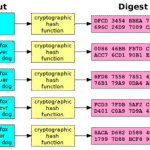Cryptography stands as one of the most fascinating and multifaceted realms of human endeavor, where the dichotomy between science and art becomes particularly pronounced. At its core, cryptography involves securing communication and information against adversaries through the techniques of encoding and decoding. This intricate process undoubtedly relies heavily on mathematical principles, algorithms, and technology—the hallmarks of a scientific discipline. However, the subtler nuances of crafting an effective cipher or encryption scheme often invoke creativity, intuition, and even aesthetic judgment, attributes commonly associated with artistic pursuits. To explore whether cryptography leans more towards science or art, we must consider both dimensions extensively.
At the outset, it is essential to recognize that cryptography has its foundations deeply embedded in mathematics and logic. The principles of number theory, algebra, and combinatorics serve as the bedrock for most cryptographic algorithms. For instance, public-key cryptography relies on the computational difficulty of factoring large prime numbers—a scientific endeavor that demands rigor and precision. Highly complex algorithms, such as RSA and Diffie-Hellman, exploit mathematical theorems to allow encrypted communication between parties without prior exchange of keys. The robustness of these algorithms depends on the hardiness of mathematical constructs, a factor that undeniably positions cryptography firmly within the domain of science.
Moreover, cryptographic techniques have evolved significantly in concert with advancements in computational power and technology. The advent of quantum computing poses challenges and opportunities for cryptographic systems, necessitating a scientific approach to safeguarding information against potential breaches. Quantum cryptography, for instance, employs principles from quantum mechanics to secure communication in an unprecedented manner. This marriage of cryptographic theory and cutting-edge technology illustrates the scientific rigor integral to the field.
However, the artistic dimension of cryptography becomes evident when exploring the approach cryptographers take in devising and implementing their solutions. Crafting encryption techniques requires an inventive mindset, as cryptographers often conceptualize unique strategies to thwart potential attacks. Much like an artist designing a masterwork, they must envision not only the immediate application of their methods but also anticipate future threats and vulnerabilities. This foresight necessitates a keen understanding of human psychology, as adversaries may exploit both technical loopholes and social engineering tactics.
Furthermore, there exists a pivotal element of creativity in encrypting data effectively. The choice of ciphers, the structuring of keys, and the development of protocols all necessitate a blend of analytical thinking and imaginative insight. Just as an artist selects colors and shapes to create meaning, cryptographers must carefully navigate the confluence of algorithms and human behavior to produce a secure and usable product. It is this interplay between structured methodology and innovative thought that evokes the notion of cryptography as an art form.
The aesthetics of cryptographic design also emerge in the interesting realm of symmetric ciphers. Algorithms such as the Advanced Encryption Standard (AES) exhibit finesse in their architectural simplicity and elegance. The intricate patterns and symmetries within these algorithms can be appreciated for their beauty, harking back to the notion that mathematical constructs can be profoundly artistic. The deliberate balance between security, performance, and usability creates an artistry within cryptographic implementations that resonates with both scientists and artists alike.
Furthermore, the history of cryptography reveals examples where artistry has played a critical role, particularly during times of war and upheaval. The enigma of deciphering messages has been a crucial aspect of espionage and military strategy. The famed Enigma machine, used during World War II, was both a technological marvel and a work of art in its design. Cryptanalysts engaged in a cat-and-mouse game of wits, underscores the notion that cryptography is an arena where intellect and imagination converge.
On the other hand, the analytical frameworks established by researchers and practitioners in the field serve to elevate the scientific aspect of cryptography. Academic papers and research contribute to advancing the state of cryptographic protocols, ensuring that they stand resilient against evolving threats. Peer reviews and empirical testing are hallmarks of scientific inquiry, establishing a robust foundation for innovations in the field of cryptography. As such, the rigorous application of scientific method is fundamental to the evolution of cryptography as we know it today.
In conclusion, attributing cryptography solely to one discipline fails to capture its rich complexity. It embodies a symbiotic relationship between science and art, with each facet enriching and enhancing the other. The scientific rigor involved in mathematical formulation and algorithmic structure provides the necessary backbone for secure communication, while the artistic intuition required for effective implementation and innovation fuels its evolution. Cryptography serves as a testament to human ingenuity—a domain where logic and creativity intertwine to forge paths toward a secure future. Thus, whether viewed through the lens of science, art, or a transformative amalgamation of both, cryptography continues to captivate and intrigue, inviting exploration and innovation well into the future.









Leave a Comment